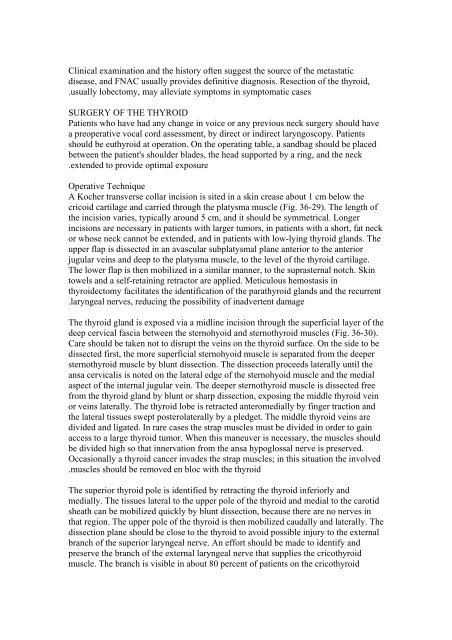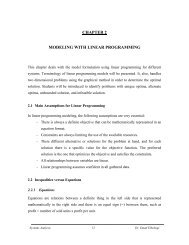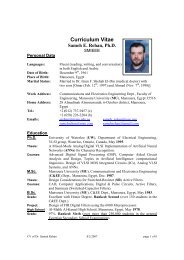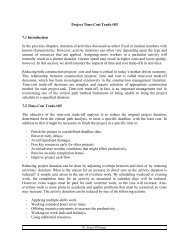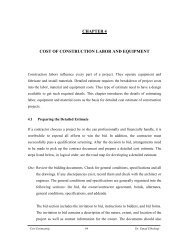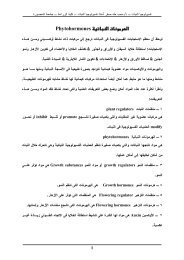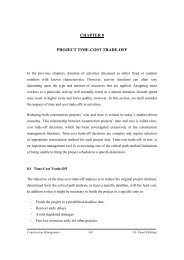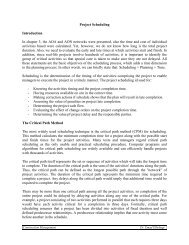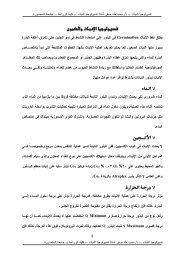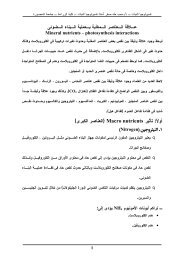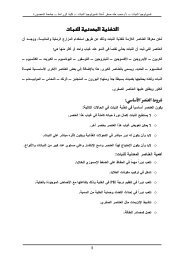Thyroid and Parathyroid
Thyroid and Parathyroid
Thyroid and Parathyroid
Create successful ePaper yourself
Turn your PDF publications into a flip-book with our unique Google optimized e-Paper software.
Clinical examination <strong>and</strong> the history often suggest the source of the metastatic<br />
disease, <strong>and</strong> FNAC usually provides definitive diagnosis. Resection of the thyroid,<br />
. usually lobectomy, may alleviate symptoms in symptomatic cases<br />
SURGERY OF THE THYROID<br />
Patients who have had any change in voice or any previous neck surgery should have<br />
a preoperative vocal cord assessment, by direct or indirect laryngoscopy. Patients<br />
should be euthyroid at operation. On the operating table, a s<strong>and</strong>bag should be placed<br />
between the patient's shoulder blades, the head supported by a ring, <strong>and</strong> the neck<br />
. extended to provide optimal exposure<br />
Operative Technique<br />
A Kocher transverse collar incision is sited in a skin crease about 1 cm below the<br />
cricoid cartilage <strong>and</strong> carried through the platysma muscle (Fig. 36-29). The length of<br />
the incision varies, typically around 5 cm, <strong>and</strong> it should be symmetrical. Longer<br />
incisions are necessary in patients with larger tumors, in patients with a short, fat neck<br />
or whose neck cannot be extended, <strong>and</strong> in patients with low-lying thyroid gl<strong>and</strong>s. The<br />
upper flap is dissected in an avascular subplatysmal plane anterior to the anterior<br />
jugular veins <strong>and</strong> deep to the platysma muscle, to the level of the thyroid cartilage.<br />
The lower flap is then mobilized in a similar manner, to the suprasternal notch. Skin<br />
towels <strong>and</strong> a self-retaining retractor are applied. Meticulous hemostasis in<br />
thyroidectomy facilitates the identification of the parathyroid gl<strong>and</strong>s <strong>and</strong> the recurrent<br />
. laryngeal nerves, reducing the possibility of inadvertent damage<br />
The thyroid gl<strong>and</strong> is exposed via a midline incision through the superficial layer of the<br />
deep cervical fascia between the sternohyoid <strong>and</strong> sternothyroid muscles (Fig. 36-30).<br />
Care should be taken not to disrupt the veins on the thyroid surface. On the side to be<br />
dissected first, the more superficial sternohyoid muscle is separated from the deeper<br />
sternothyroid muscle by blunt dissection. The dissection proceeds laterally until the<br />
ansa cervicalis is noted on the lateral edge of the sternohyoid muscle <strong>and</strong> the medial<br />
aspect of the internal jugular vein. The deeper sternothyroid muscle is dissected free<br />
from the thyroid gl<strong>and</strong> by blunt or sharp dissection, exposing the middle thyroid vein<br />
or veins laterally. The thyroid lobe is retracted anteromedially by finger traction <strong>and</strong><br />
the lateral tissues swept posterolaterally by a pledget. The middle thyroid veins are<br />
divided <strong>and</strong> ligated. In rare cases the strap muscles must be divided in order to gain<br />
access to a large thyroid tumor. When this maneuver is necessary, the muscles should<br />
be divided high so that innervation from the ansa hypoglossal nerve is preserved.<br />
Occasionally a thyroid cancer invades the strap muscles; in this situation the involved<br />
. muscles should be removed en bloc with the thyroid<br />
The superior thyroid pole is identified by retracting the thyroid inferiorly <strong>and</strong><br />
medially. The tissues lateral to the upper pole of the thyroid <strong>and</strong> medial to the carotid<br />
sheath can be mobilized quickly by blunt dissection, because there are no nerves in<br />
that region. The upper pole of the thyroid is then mobilized caudally <strong>and</strong> laterally. The<br />
dissection plane should be close to the thyroid to avoid possible injury to the external<br />
branch of the superior laryngeal nerve. An effort should be made to identify <strong>and</strong><br />
preserve the branch of the external laryngeal nerve that supplies the cricothyroid<br />
muscle. The branch is visible in about 80 percent of patients on the cricothyroid


